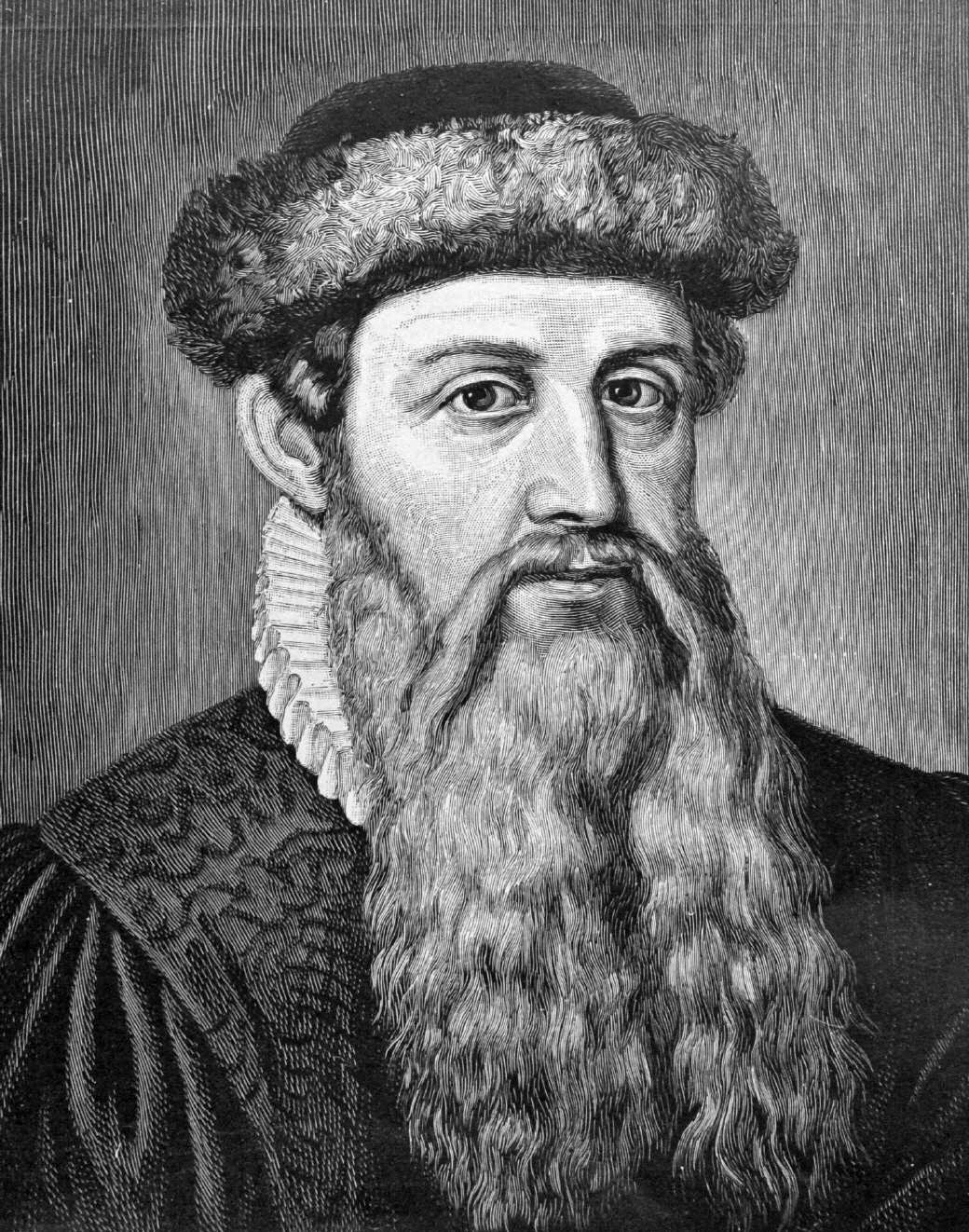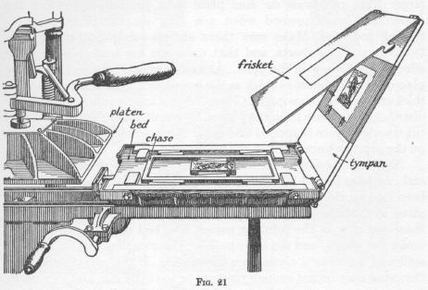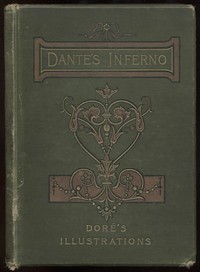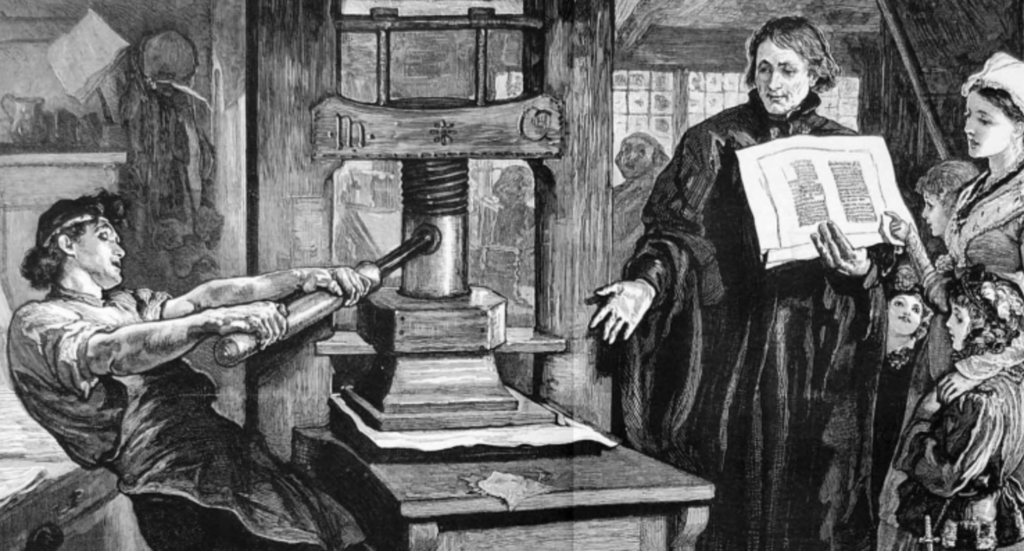Introduction
Johannes Gutenberg, a German inventor born in Mainz around 1400, revolutionised communication, education, and knowledge dissemination through his groundbreaking invention of the printing press. Before Gutenberg’s invention, books were copied by hand, limited to the clergy and aristocracy, and limited in terms of time and resources. Gutenberg’s invention revolutionised the production of books by using movable metal type, enabling mass printing on an unprecedented scale. In 1455, Gutenberg unveiled the Gutenberg Bible, the first major book printed using movable type in the Western world. This groundbreaking work not only showcased the printing press’s capabilities but also marked a new era of intellectual enlightenment. Information access restrictions were broken down by the printing press, opening the door to a plethora of new ideas, insights, and viewpoints. Literacy rates soared as books became more affordable and accessible, empowering individuals to educate themselves and engage with the world.
Historical Context
The mediaeval era was distinguished by a manuscript culture that mainly relied on handwritten texts prior to the invention of the printing press. This labor-intensive method, which shaped education and knowledge distribution, was costly, time-consuming, and narrow in scope. Pencil and vellum were used for handwritten manuscripts, which were painstakingly created by trained scribes at monasteries. The creation of these manuscripts was expensive and time-consuming, so only a select few could afford the books. Due to the lack of libraries, knowledge was only available to the church, nobility, and academic elite, which hampered intellectual advancement and cross-cultural exchange.

It also had difficulties in disseminating knowledge because of the scarcity of qualified scribes, the high expense, and the vulnerability to mistakes and inconsistencies. The correctness and dependability of handwritten books were impacted by the faults and omissions committed by scribes. Manuscripts’ fragility presented serious preservation issues as well. Moisture, pests, and environmental degradation have caused many priceless works to be lost, leaving gaps in our knowledge of past and present. The growing interest in literature, religion, and education during the Middle Ages in Europe led to an increase in book demand. This demand was fueled in part by universities, Christianity, and an educated middle class. Nevertheless, issues with labour prices, material scarcity, and a lack of standard operating procedures beset the book production industry. Johannes Gutenberg’s invention of practical and affordable printing techniques revolutionised the industry.

Invention of the Printing Press
German inventor, goldsmith, and businessman Johannes Gutenberg was born in Mainz, Germany, circa 1400. His groundbreaking work established the groundwork for the contemporary printing sector. Gutenberg developed his metalworking abilities in Mainz, a thriving hub of trade and business, during the fifteenth century. By creating a more productive printing technique using moveable type, he transformed the book production industry.

Gutenberg’s breakthrough came in the form of a novel printing system that combined movable metal type, oil-based ink, and a mechanical press. Unlike traditional woodblock printing, which required the carving of individual blocks for each page, Gutenberg’s method allowed for the rapid assembly and disassembly of individual letters, numbers, and symbols. Central to Gutenberg’s innovation was the creation of a durable and reusable typeface made from an alloy of lead, tin, and antimony. Each character was meticulously crafted with precision and consistency, ensuring uniformity and legibility in the printed text. The type was set into a wooden frame known as a “forme,” which could be locked into place on the printing press.
Gutenberg’s printing press, a marvel of engineering for its time, featured a hand-operated screw mechanism that exerted pressure on the forme, transferring ink from the type to the paper. This revolutionary method of printing enabled the rapid production of books with unprecedented speed and accuracy, forever changing the landscape of publishing and literacy.

In 1455, after years of experimentation and refinement, Gutenberg discovered his masterpiece: the Gutenberg Bible, also known as the 42-line Bible or the Mazarin Bible. The complete text of the Christian scriptures was collected in two volumes of the 42-line Bible, sometimes called the Mazarin Bible. This ground-breaking effort brought mass communication and the transmission of knowledge, ushering in the era of printed books. The Gutenberg Bible, though a luxury item, attracted scholars, collectors, and patrons, establishing Gutenberg’s status as one of the forerunners of the printing revolution. The popularity of the Gutenberg Bible encouraged writing and cross-cultural dialogue, revolutionising the dissemination and exchange of knowledge.
Impact on Society and Culture
Spread of Knowledge and Information
The printing press revolutionised society and culture by making books more affordable and accessible to a wider audience. This democratisation of access to knowledge sparked a Renaissance of learning and intellectual inquiry, allowing individuals from all walks of life to educate themselves and engage with diverse ideas and perspectives.
Democratisation of Learning and Literacy
The printing press dramatically increased literacy rates and allowed for critical reading, writing, and information analysis, democratising education and literacy. It created a culture of lifelong learning and intellectual curiosity by expanding educational options outside the church and nobility and allowing individuals from a variety of backgrounds to obtain knowledge through textbooks, periodicals, and pamphlets.
Cultural and Religious Revolutions Sparked by Printed Materials
The printing press challenged the power of the Catholic Church and contributed significantly to the dissemination of religious writings. It also democratised knowledge. Additionally, it made it easier to translate the Bible into common tongues, which in turn led to the Protestant Reformation. The printing press also made it easier for humanist ideas and classical education to proliferate, sparking a cultural revolution that revolutionised philosophy, literature, and the arts.
Dissemination of Scientific Knowledge and the Rise of the Scientific Revolution
In addition to its impact on religion and culture, the printing press also played a pivotal role in the dissemination of scientific knowledge and the rise of the Scientific Revolution. Before the invention of the printing machine, scientific texts were frequently distributed as manuscripts, making them only available to a small group of academics and intellectuals. But the development of mass printing allowed scientific discoveries to be published and made available to a larger audience, which quickened the speed of scientific research and discovery. The printing press paved the way for a new age of empirical research and experimentation by enabling scientists like Copernicus, Galileo, and Newton to disseminate their revolutionary theories and findings to a worldwide audience.
Economic and Social Transformations
Growth of the Publishing Industry
The printing press allowed for the mass production of inexpensive books, which completely changed the publishing landscape. As a result, printing workshops began to appear in large cities, stimulating thought and artistic expression. A lively marketplace of ideas and information was formed by the growth of printed publications, which included religious texts, intellectual treatises, novels, and pamphlets.
Expansion of Literacy Rates and Education
The printing press made reading more widely available by dramatically raising literacy and educational rates. Books were becoming indispensable teaching instruments, and schools, libraries, and institutions prospered. This made education more accessible to everyone, empowering people from all walks of life to learn, think critically, and participate in society.
Economic Effects on Book Production and Distribution
By enabling mass manufacturing, cutting prices, and easing book dissemination across great distances, the printing press revolutionised the production and circulation of books. This cutthroat book market encouraged creativity in binding processes, printing procedures, and marketing approaches, which in turn fueled the publishing industry’s expansion.
Changes in the Role of Scholars, Authors, and Readers
The printing press transformed society by giving academics access to a vast array of printed works, encouraging cooperation, and disseminating knowledge. It also gave writers the opportunity to connect with a wider readership, which shaped their perspectives and areas of interest in academia. This made it possible for people to interact directly with written texts, promoting a literacy, inquiry, and debate culture that set the stage for the Renaissance’s intellectual ferment.
Printing Press and the Renaissance
The printing press played a crucial role in the Renaissance, enabling the revival of classical knowledge and the dissemination of humanist ideals. It made ancient Greek and Roman texts more accessible, providing inspiration and intellectual nourishment for Renaissance thinkers and artists. The printing press promoted a culture of inquiry, innovation, and cross-cultural exchange by facilitating the dissemination of ideas across boundaries and generations. For Renaissance humanists, printed versions of classical works by authors like Plato, Aristotle, Virgil, and Cicero served as essential reading. For Renaissance humanists, these printed versions proved to be invaluable resources because they were more precise, reasonably priced, and accessible than their handwritten equivalents. The Renaissance’s literary, artistic, and intellectual landscapes were all profoundly altered by the printing press. Artists were able to distribute their work more extensively and connect with larger audiences thanks to printed books. Literary masterpieces like Petrarch’s sonnets and Dante’s “Divine Comedy” influenced the growth of humanist philosophy and popular literature. Literary works like Dante’s “Divine Comedy” and Petrarch’s sonnets contributed to the development of vernacular literature and humanist thought. Intellectual movements like the scientific revolution and the Protestant Reformation were also profoundly shaped by the printing press.






